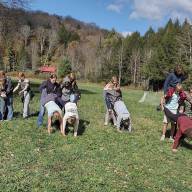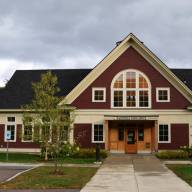This week, Harwood’s sophomores are displaying informative posters on reformers in the Progressive Era. The posters will remain on display in the hallway by the library for at least three weeks.
The Progressive Era, which took place around the turn of the 20th century, is renowned for its reform efforts, including women’s suffrage, the “muckraking” style of journalism (which exposed fraud, corruption, and abuse and is the basis for modern-day investigative journalism), and the short-lived Prohibition period.
Before the Progressive Era was the Gilded Age, which lasted from the end of the Civil War to the turn of the20th century. This was a period where the country experienced both incredible economic growth, especially in the factory and oil industries; and widespread oppression after the wealth gap grew and Reconstruction era laws were loosened in the South. During this period, there were many people who stood up against the Gilded Age and its oppressive practices: people of all races from different backgrounds and with different causes.
PEOPLE WHO TOOK ACTION
This project, which was completed for the sophomore year U.S. History class, “highlights people who took action,” as one of the teachers, Matt Henchen, said.
The U.S. History classes are taught by three teachers: Matt Henchen, Jane Regan, and Robert MacLeod. They introduced this unit by teaching students about the Gilded Age and drawing parallels to today, with a large national wealth gap and an oligarchical economy. “We decided that we should spend more time this year on the Progressive Era,” said Regan, “and show that there were lots of multiracial men and women fighting back against the Gilded Age. History is not only made by great men and women.”
The classes brainstormed a list of notable reformers, which included famous muckrakers like Jacob Riis, Ida Tarbell, and Upton Sinclair; suffragettes like Susan B. Anthony and Alice Paul; civil rights activists W.E.B. Dubois, Booker T. Washington, and Ida B. Wells; President Teddy Roosevelt; and Helen Keller, who was an open socialist. “This helps show that individual people can make a positive change,” said MacLeod.
THE ASSIGNMENT
The assignment required students to create an informative poster (or a “one-pager”) on one of the reformers. The posters had to include a brief biography; information about the reformer’s cause, organization, or movement; their accomplishments; related images; and a quote from the reformer. Some classes began displaying their posters on Tuesday, April 1, and the rest will hang theirs up throughout the week. After this, students will compare the reformer that they studied to two others: what did they have in common? What did their backgrounds look like? What issues did they fight for? How did these people fight for and advance their causes?
When Vice President JD Vance visited Vermont to ski at Sugarbush, he was greeted with protests along the way. Protestors gathered in South Burlington, Waitsfield, Fayston and Warren to mark his visit. “People in the Valley stood up when Vance visited,” said Regan, who lives in The Valley. “It partially inspired me. We want students to understand that history never stands still; it’s a battle between progressive and regressive forces. We want these in the hall in the hope that it inspires all of us to remember that it’s possible to fight back against regressive forces.”













